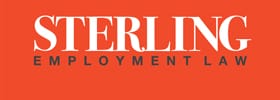Supreme Court rules on crucial employment law matters
Two recent Supreme Court decisions help elucidate specific employment laws, which are integrated into retaliation and discrimination cases. The rulings will pave the way for future matters.
In the first case, a medical center wanted to overturn a victorious employment lawsuit, which was brought by a former employee of the facility. The plaintiff left the hospital in 2006 after complaining of harassment. He subsequently pursued a job opportunity at another medical center, but the new hospital withdrew its offer after a supervisor at the plaintiff’s former place of employment opposed the plaintiff’s opportunity. In this case, the plaintiff filed suit, noting that the former employer retaliated against him for his prior discrimination allegations and encouraged the subsequent medical facility to withdraw its offer of employment.
The medical facility (employer) appealed on the basis of jury instructions. The defendant alleged that the jury instructions, which advised that the jury need only find that “retaliation was a motivating factor in the supervisor’s actions,” were incorrect. The defendant, instead, advocated for instructions, which meant that liability would attach if the jury could find that the discriminatory action would not have occurred “but-for” the supervisor’s intention to retaliate.
In this particular case, the Supreme Court confirmed that plaintiffs “must establish that his or her protected activity was a but-for cause of the alleged adverse action by the employer.” Ultimately, the court returned the case back to the lower courts for further analysis.
The second case detailed a woman who was a catering specialist at a university. The woman accused her coworker of racial harassment and retaliation in 2004. The employee sued the institution under the Civil Rights Act of 1964, attributing liability to the school since the coworker was her purported supervisor. Nevertheless, a federal judge ruled that the coworker was a coworker and not the woman’s supervisor. Moreover, because the university had taken corrective action in the incident, it was not responsible.
When the case reached the Supreme Court, the majority noted that a supervisor must have the ability to promote, demote, hire, fire or discipline. In this case, the coworker did not have such authority over the plaintiff, according to the court. Moreover, the school did not empower the coworker with such responsibilities. Therefore, the court ruled in favor of the university.
The court’s rulings were highly contested. Although some legal scholars warn that the court’s findings leave little recourse for victims of employment retaliation or discrimination, they do not announce new rules of law that are significantly different from how the courts have applied the law over the last few years. If you have been a victim of employment issues, you may benefit from speaking with an experienced employment law attorney. Employees have specific rights and protections under the law. A lawyer can help you assert your rights with the recent rulings in mind. To learn more, speak to a professional in your area.
